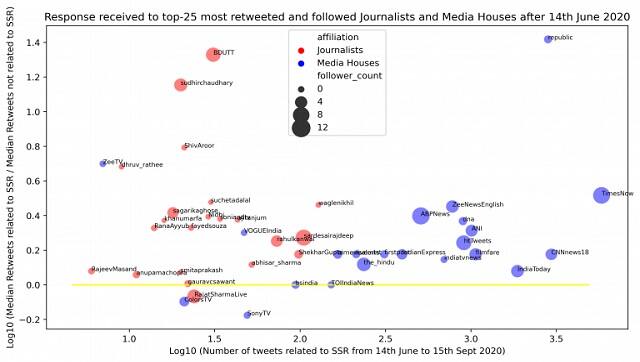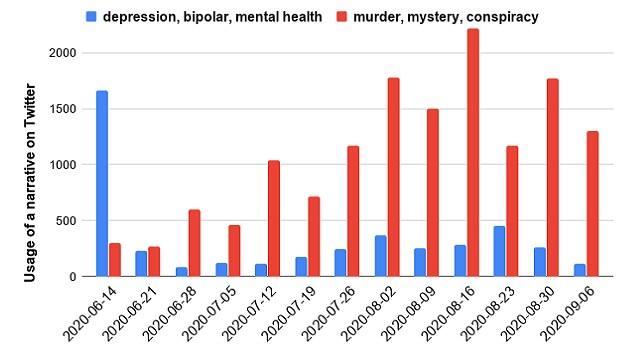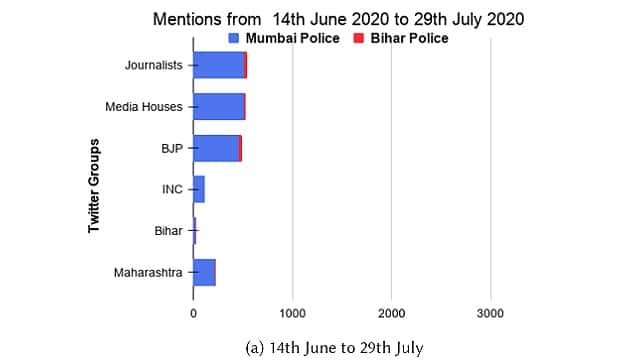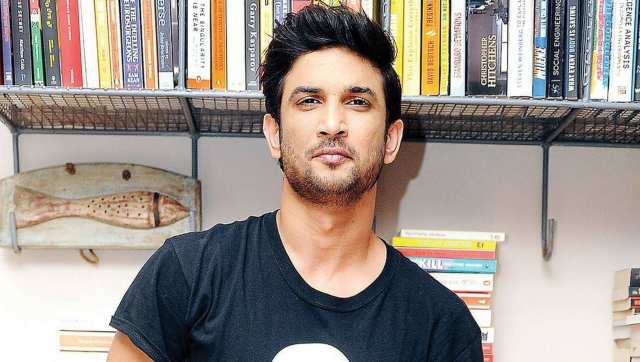This research study was originally published on
arxiv.org
and has been reproduced here with due permission. *** Abstract — The suicide of Indian actor Sushant Singh Rajput in the midst of the COVID-19 lockdown triggered a media frenzy of prime time coverage that lasted several months and became a political hot button issue. Using data from Twitter, YouTube, and an archive of debunked misinformation stories [over 14 June-12 September 2020], we found two important patterns: First, that retweet rates on Twitter clearly suggest that commentators benefited from talking about the case, which got higher engagement than other topics. Second, that politicians, in particular, were instrumental in changing the course of the discourse by referring to the case as ‘murder’, rather than ‘suicide’. In conclusion, we consider[ed] the effects of Rajput’s outsider status as a small-town implant in the film industry within the broader narrative of systemic injustice, as well as the gendered aspects of mob justice that have taken aim at his former partner in the months since. A timeline of the key events in the case, news coverage, Twitter activity, and key personalities who were in the news or social media cycle can be
viewed here
. * Summarising the main points
from the discussion and conclusion of the paper — The trajectories of news coverage and misinformation around the death of Sushant Singh Rajput offer insight into the media environment in India, but also into the fractured nature of what the audience cares to consume. In a recent television interview, journalist P Sainath rued that scores of suicides of farmers, driven to desperation by poverty and state failure, had failed to garner a small percentage of the attention that this case had received. That the audience has consistently rewarded news channels for following this story — including through meteoric ratings for the Republic news network which has offered the most aggressive coverage — are testament to the citizenry’s complicity. Undoubtedly, the specifics of the story, particularly Rajput’s journey as an outsider, breaking into the difficult world of show business with its well known nepotism is an important part of why it had such affective value. The notion of Rajput as an outsider is not unlike past, successful narratives of other outsiders who have taken on a system — most prominently that of Narendra Modi taking on the entrenched Congress institutions. Empathising with Rajput is rooting for the underdog. The data show an important role played by politicians, especially the BJP, in proposing a ‘murder’ alternative to the ‘suicide’ narrative. There was a real opportunity to address mental health and depression early in news cycle, but the stories quickly devolved to allusive concoctions. The move towards conspiracies was accompanied by multiple supporting actors — the local police was proposed as incompetent, or in cahoots with the cabal, the state government itself was presented as nepotistic and inimical to the interests of poor outsiders. [caption id=“attachment_8884821” align=“alignnone” width=“640”]
 Tweets on Sushant Singh Rajput get more retweets on average than tweets on other subjects, arguably beneficial for the channels. Image courtesy the authors. View in full
here
.[/caption] [caption id=“attachment_8884831” align=“alignnone” width=“640”]
Tweets on Sushant Singh Rajput get more retweets on average than tweets on other subjects, arguably beneficial for the channels. Image courtesy the authors. View in full
here
.[/caption] [caption id=“attachment_8884831” align=“alignnone” width=“640”]
 At the start of the issue, depression and mental health were central parts of the discussions. As time went by, conspiracy-related topics became more and more prominent. Image courtesy the authors. View in full
here
.[/caption] [caption id=“attachment_8884841” align=“alignnone” width=“640”]
At the start of the issue, depression and mental health were central parts of the discussions. As time went by, conspiracy-related topics became more and more prominent. Image courtesy the authors. View in full
here
.[/caption] [caption id=“attachment_8884841” align=“alignnone” width=“640”]
 (Here and below) The Mumbai police was targeted by various stakeholders, but particularly BJP politicians. Images courtesy the authors. View in full
here
.[/caption]
(Here and below) The Mumbai police was targeted by various stakeholders, but particularly BJP politicians. Images courtesy the authors. View in full
here
.[/caption]
Anatomy of a rumour: An analysis of social media content surrounding Sushant Singh Rajput's death
Syeda Zainab Akbar, Ankur Sharma, Himani Negi Anmol Panda, Joyojeet Pal
• October 8, 2020, 20:57:06 IST
While social media may have facilitated certain kinds of virality and speed with which the narratives have changed, the Sushant Singh Rajput case and its victims are a reminder of ways in which the patriarchy is alive and well, and always readying its blades for the next execution.
Advertisement
)
As research into online groups claiming to seek justice for Sushant Singh Rajput has shown,
a mix of
ultranationalism, casteism, distrust of Muslims, and misogyny are drivers of some of the online action that we have seen in recent months. And as much recent work into political speech has also shown, an ecosystem of outrage exists in place in India, and it may be far from coincidental that a lot of the celebrities being trolled in the aftermath of the suicide were among those who were critical of the government in the past. The array of stakeholders, each with their own interests in moving the story forward, are an important part of what has driven this to the point of being perhaps the top national story, despite being in the middle of the worst pandemic and economic crisis India has known. The timing of the suicide, in the midst of the coronavirus crisis and lockdown, with many urban middle-class Indians stuck at home, probably had a role in driving up purchase for the story. The Sushant Singh Rajput case came at a point when prime time for a while had been saturated simply with news of the virus. The story offered a diversion. Several public figures, long outside the spotlight in the midst of the COVID-crisis found their way back into the news. The media channels that amplified these stories have a financial incentive to get more viewers. The political parties that engaged in the story arguably benefited from being in the spotlight and used it as a means to attack their opponents. On Firstpost —
Reading Rhea Chakraborty’s public vilification as a modern-day witch hunt: Actress’ harassment has historic roots
Finally, there is also an unmistakable gendered aspect to this. Several high profile female stars have taken their own lives over the years, and many of these stories have ended with victim blaming or stay in the news cycle for very short periods of time. The victims of this case have mostly been women — Rhea Chakraborty was slandered and hounded, eventually ending up in jail without bail. As the scandal devolved into allegations about drugs — the Narcotics Control Bureau
summoned four movie actors
— Deepika Padukone, Sara Ali Khan, Shraddha Kapoor, and Rakul Preet Singh — all women, and at the time of this writing, all intensely targeted by trolling and mainstream media speculation online. The Sushant Singh Rajput case is a story of one man’s personal journey that ends in tragedy. The events that followed may tempt us to think that this offers a window into the ways that online culture has changed society and media in India. But the truth may be more chilling than that. While social media may have facilitated certain kinds of virality and speed with which the narratives have changed, the case and its victims are a reminder of ways the patriarchy is alive and well, and always readying its blades for the next execution. Complete list of journalists, media houses and politicians included in this study can be
accessed here
. *** The authors are social media researchers. Access the research study
here
. A full summation of the conclusions is available
here
.
End of Article